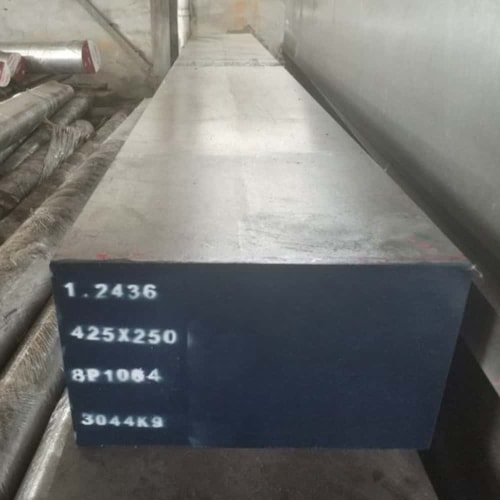Introduction

Mild steel, a versatile and widely used metal alloy, is composed primarily of iron with a small percentage of carbon. This strategic composition endows mild steel with a unique blend of properties, making it an ideal choice for a diverse range of applications. From the towering structures of modern cities to the intricate components of machinery, mild steel’s adaptability and cost-effectiveness have solidified its position as a cornerstone material in various industries. This comprehensive guide delves into the intricacies of mild steel plates, exploring their composition, properties, manufacturing processes, and myriad applications.
Understanding Mild Steel
Mild steel, often referred to as plain carbon steel, is characterized by its relatively low carbon content, typically ranging from 0.05% to 0.25%. This precise carbon composition imparts mild steel with several key properties:
- Ductility: Mild steel exhibits exceptional ductility, allowing it to be easily shaped and formed into various components through processes such as bending, drawing, and forging.
- Malleability: This property enables mild steel to be hammered or rolled into thin sheets without compromising its structural integrity.
- Weldability: Mild steel is highly weldable, facilitating the joining of different components to create complex structures.
- Machinability: It can be readily machined using a variety of cutting tools, enabling precise shaping and finishing.
Manufacturing Process of Mild Steel Plates
The production of mild steel plates involves a meticulous series of steps:
- Iron Ore Mining: The journey begins with the extraction of iron ore from the earth’s crust.
- Ironmaking: Iron ore is transformed into pig iron within a blast furnace through a high-temperature reduction process.
- Steelmaking: Pig iron undergoes further refinement in a basic oxygen furnace or an electric arc furnace to yield steel.
- Continuous Casting: Molten steel is continuously poured into molds to form solid slabs.
- Hot Rolling: The slabs are heated to a high temperature and rolled into plates of the desired thickness.
- Cold Rolling: To achieve superior surface finish and precise dimensional accuracy, hot-rolled plates may undergo additional cold rolling.
- Heat Treatment: Heat treatment processes, such as annealing and normalizing, are employed to modify the mechanical properties of the steel, enhancing its performance for specific applications.
Properties of Mild Steel Plates
Mild steel plates possess a combination of mechanical, physical, and chemical properties that contribute to their versatility:
- Mechanical Properties: Strength, ductility, hardness, and toughness are the primary mechanical properties that define mild steel’s structural integrity and resistance to deformation.
- Physical Properties: Density, melting point, and electrical conductivity are essential physical properties that influence the material’s behavior in various applications.
- Chemical Properties: Corrosion resistance, oxidation, and reactivity with acids are critical chemical properties that determine mild steel’s durability and compatibility with different environments.
Applications of Mild Steel Plates
The diverse properties of mild steel plates make them indispensable in numerous industries:
- Construction: Mild steel serves as the backbone of construction, forming the structural components of buildings, bridges, and other infrastructure.
- Automotive: It is extensively used in the automotive industry for body panels, chassis, and engine components.
- Marine: Mild steel plays a crucial role in shipbuilding, forming the hulls, decks, and equipment of vessels.
- Manufacturing: It is employed in the manufacturing of machinery components, tools, and equipment across various sectors.
- Agriculture: Mild steel finds applications in farm equipment, storage tanks, and fencing.
Factors Affecting the Quality of Mild Steel Plates
Several factors influence the quality and performance of mild steel plates:
- Chemical Composition: The precise composition of carbon and other alloying elements significantly impacts the properties of mild steel.
- Manufacturing Process: Adherence to rigorous quality control measures throughout the manufacturing process ensures consistent product quality.
- Heat Treatment: The type and duration of heat treatment processes influence the final properties of the steel.
- Surface Finish: A smooth and uniform surface finish enhances the appearance and performance of mild steel products.
Comparison of Mild Steel with Other Steels

| Property | Mild Steel | Stainless Steel | Alloy Steel | High-Carbon Steel |
|---|---|---|---|---|
| Carbon Content | 0.05-0.25% | Low | Varies | High |
| Corrosion Resistance | Low | High | Varies | Low |
| Strength | Moderate | High | High | High |
| Ductility | High | Moderate | Varies | Low |
| Weldability | High | Moderate | Varies | Low |
| Cost | Low | High | Moderate to High | Moderate |
Conclusion
Mild steel plates have earned their place as a versatile and reliable material in countless applications. Their favorable combination of properties, coupled with cost-effectiveness, makes them an ideal choice for engineers and designers. By understanding the intricacies of mild steel, we can harness its potential to create innovative and sustainable solutions for the future.
FAQ
What is the difference between mild steel and stainless steel?
Mild steel is susceptible to corrosion, while stainless steel possesses superior corrosion resistance due to its higher chromium content.
How is mild steel strengthened?
Mild steel can be strengthened through various methods, including cold working, heat treatment, and alloying with other elements.
What is the carbon content of mild steel?
Mild steel typically contains between 0.05% and 0.25% carbon.
Can mild steel be welded?
Yes, mild steel is highly weldable, making it suitable for various joining techniques.
What are the common grades of mild steel?
Common grades of mild steel include A36, A572, and A516.

